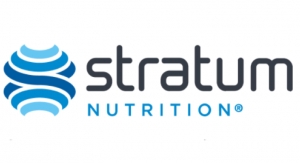Greg Stephens & Jim Dorsch, Windrose Partners09.01.14
This month’s Business Insights builds on our April column, “Strategic Clarity Delivers the Best Results.” Nutraceutical markets—functional foods, dietary supplements, medical foods and cosmeceuticals—are maturing. Competition is strong for market growth and share. In such maturing markets, there are two business strategies that are always appropriate
The best place to accomplish growing the current business is within your current organization. The key to unlocking the power of the current organization is to create an environment that encourages creativity and has a planning process that emphasizes focus on goals and the milestones required to achieve these goals.
Here are some quick and easy techniques to unlock the creativity in your organization.
Review Existing Work
At some point in time, talented people generated ideas for improving every area of the business. For a variety of reasons, many of those ideas may have been lost or put aside. This could be due to a change in management, changes in the external environment or just the numerous requirements of delivering results every quarter. A review and summary of the past work is likely to yield a fresh look that might unearth hidden gems.
The world today generates content faster than ever before. Opportunity or issue identification is often done by quantifying the number of times content (a word, phrase, product, brand, regulation, machine, process, etc.) appears in a set of communications relevant to your business. There are numerous ways to obtain such information that can be as simple as a Google Trends query. Organizing this constant flow of information can produce amazingly clear pictures of current trends—things that are in the news every day, new trends and things that are important to opinion leaders.
These two activities may be viewed as tedious, but they should be done by those with the will and/or budget to win.
Brainstorm & Report
Brainstorming can be exhilarating. It can be a team-building event when basic guidelines are established. For example, enough time has to be set aside to allow everyone to participate. Establish session ground rules to keep participants engaged; there is no “boss” in these sessions; there should be no interrupting; there should be no negative comments allowed; there should be time limits on a person’s comment; etc.
The best brainstorming sessions occur when the general theme or goal of the session is established and the “existing work review” has been sent to all participants. A professional moderator and meeting recorder most often makes these sessions more focused and productive. One often-used technique is to create teams, ideally cross-functional, within the brainstorm participants to see which team can generate the best content.
When a brainstorm session is conducted, a written report from that session should be prepared and shared with the participants to make sure all content was captured.
Prioritize & Plan
The ideas in the brainstorming report need to be prioritized. These ideas need to be evaluated based on whatever criteria are deemed important to the organization. Some common criteria include surety of result, impact of result, timing and resources required, budget and people. Once these criteria have been defined, the brainstorm team can be assembled to provide opinions regarding priorities.
Each brainstorm idea or initiative should be evaluated against the criteria defined. For nutritional products, criteria may include, for example: efficacy, safety, sensory attributes, USP (unique selling position), claims potential. A simple “red/yellow/green” or “1-10” evaluation with reasons why is often a good way to generate issues associated with each idea and to separate ideas into priority groups. If more precise follow-up is needed, so be it.
With this group setting priorities, commitment is built. The top priority item should then be “planned.” Goals or objectives should be defined; major action steps to accomplish these goals defined with timing; budgets and responsibilities determined.
These plans can be documented with simple templates to help communicate goals and expectations to all players. This planning activity may take another session, or one session may be able to address more than one project. However the planning is done, the result is a documented, clear, team-built path forward. As a project moves through the stage-gate system, more detailed analysis is necessary to assure the project remains on target and viable.
Monitor & Adjust Regularly
With the plan in place, regular meetings to review progress can keep the momentum building. The organization’s templates can help guide discussion. The discussion will inevitably include unforeseen problems requiring team support and/or plan adjustment. An organized, supportive process will generate maximum traction for your company against its top priorities.
As with brainstorming and each step in this process, some type of moderator/facilitator is often helpful to keep meeting ground rules in place so the group focus against results is maintained.
A Windrose is a device that orients a windmill or sail to an air current to maximize the power generated. Windrose Partners are dedicated to harnessing the energy of your markets by orienting your organization to maximize the power generated. We would be glad to discuss this article with you.
Greg Stephens, RD, is president of Windrose Partners, a company serving clients in the the dietary supplement, functional food and natural product industries. Formerly vice president of strategic consulting with The Natural Marketing Institute (NMI) and Vice President of Sales and Marketing for Nurture, Inc (OatVantage), he has 25 years of specialized expertise in the nutritional and pharmaceutical industries. He can be reached at 215-860-5186; E-mail: gregstephens@windrosepartners.com.
Jim Dorsch has 30 years of management experience with Fortune 100 companies. Highlights include developing and launching more than $700 million in new products. He created business systems and marketing innovation across the globe as Campbell’s Soup International CMO. Mr. Dorsch consulted for major companies on functional foods and ingredients. He co-founded NutraBrand Innovations, LLC, which developed and launched MegaMilk.
- Focus on growing the current business; leveraging both current product portfolios and operating capabilities.
- Minimize the cost associated with the current business; increase margins and look elsewhere for new bottom line sales.
The best place to accomplish growing the current business is within your current organization. The key to unlocking the power of the current organization is to create an environment that encourages creativity and has a planning process that emphasizes focus on goals and the milestones required to achieve these goals.
Here are some quick and easy techniques to unlock the creativity in your organization.
- Review Existing Work
- Brainstorm & Report
- Prioritize & Plan
- Monitor & Adjust Regularly
Review Existing Work
At some point in time, talented people generated ideas for improving every area of the business. For a variety of reasons, many of those ideas may have been lost or put aside. This could be due to a change in management, changes in the external environment or just the numerous requirements of delivering results every quarter. A review and summary of the past work is likely to yield a fresh look that might unearth hidden gems.
The world today generates content faster than ever before. Opportunity or issue identification is often done by quantifying the number of times content (a word, phrase, product, brand, regulation, machine, process, etc.) appears in a set of communications relevant to your business. There are numerous ways to obtain such information that can be as simple as a Google Trends query. Organizing this constant flow of information can produce amazingly clear pictures of current trends—things that are in the news every day, new trends and things that are important to opinion leaders.
These two activities may be viewed as tedious, but they should be done by those with the will and/or budget to win.
Brainstorm & Report
Brainstorming can be exhilarating. It can be a team-building event when basic guidelines are established. For example, enough time has to be set aside to allow everyone to participate. Establish session ground rules to keep participants engaged; there is no “boss” in these sessions; there should be no interrupting; there should be no negative comments allowed; there should be time limits on a person’s comment; etc.
The best brainstorming sessions occur when the general theme or goal of the session is established and the “existing work review” has been sent to all participants. A professional moderator and meeting recorder most often makes these sessions more focused and productive. One often-used technique is to create teams, ideally cross-functional, within the brainstorm participants to see which team can generate the best content.
When a brainstorm session is conducted, a written report from that session should be prepared and shared with the participants to make sure all content was captured.
Prioritize & Plan
The ideas in the brainstorming report need to be prioritized. These ideas need to be evaluated based on whatever criteria are deemed important to the organization. Some common criteria include surety of result, impact of result, timing and resources required, budget and people. Once these criteria have been defined, the brainstorm team can be assembled to provide opinions regarding priorities.
Each brainstorm idea or initiative should be evaluated against the criteria defined. For nutritional products, criteria may include, for example: efficacy, safety, sensory attributes, USP (unique selling position), claims potential. A simple “red/yellow/green” or “1-10” evaluation with reasons why is often a good way to generate issues associated with each idea and to separate ideas into priority groups. If more precise follow-up is needed, so be it.
With this group setting priorities, commitment is built. The top priority item should then be “planned.” Goals or objectives should be defined; major action steps to accomplish these goals defined with timing; budgets and responsibilities determined.
These plans can be documented with simple templates to help communicate goals and expectations to all players. This planning activity may take another session, or one session may be able to address more than one project. However the planning is done, the result is a documented, clear, team-built path forward. As a project moves through the stage-gate system, more detailed analysis is necessary to assure the project remains on target and viable.
Monitor & Adjust Regularly
With the plan in place, regular meetings to review progress can keep the momentum building. The organization’s templates can help guide discussion. The discussion will inevitably include unforeseen problems requiring team support and/or plan adjustment. An organized, supportive process will generate maximum traction for your company against its top priorities.
As with brainstorming and each step in this process, some type of moderator/facilitator is often helpful to keep meeting ground rules in place so the group focus against results is maintained.
A Windrose is a device that orients a windmill or sail to an air current to maximize the power generated. Windrose Partners are dedicated to harnessing the energy of your markets by orienting your organization to maximize the power generated. We would be glad to discuss this article with you.
Greg Stephens, RD, is president of Windrose Partners, a company serving clients in the the dietary supplement, functional food and natural product industries. Formerly vice president of strategic consulting with The Natural Marketing Institute (NMI) and Vice President of Sales and Marketing for Nurture, Inc (OatVantage), he has 25 years of specialized expertise in the nutritional and pharmaceutical industries. He can be reached at 215-860-5186; E-mail: gregstephens@windrosepartners.com.
Jim Dorsch has 30 years of management experience with Fortune 100 companies. Highlights include developing and launching more than $700 million in new products. He created business systems and marketing innovation across the globe as Campbell’s Soup International CMO. Mr. Dorsch consulted for major companies on functional foods and ingredients. He co-founded NutraBrand Innovations, LLC, which developed and launched MegaMilk.

























